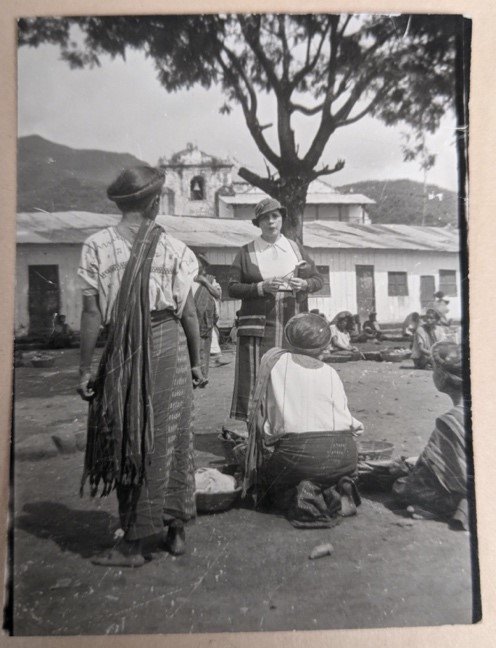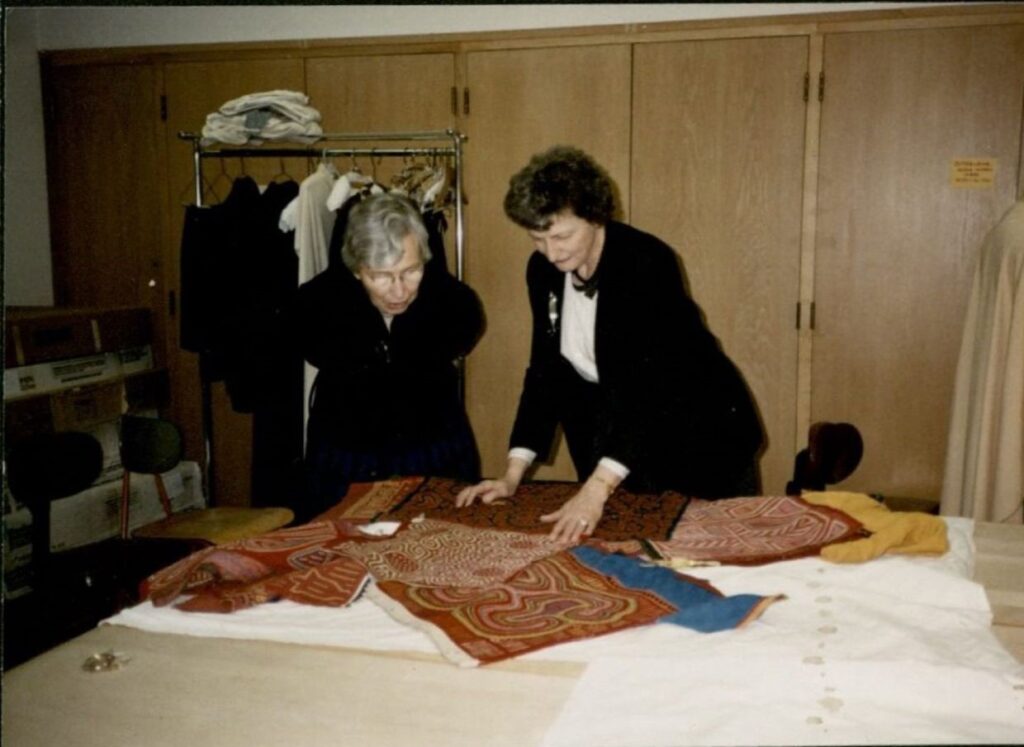History
The Textiles and Clothing Museum collection began as a teaching tool for the Department of Textiles and Clothing in the 1920s. Now numbering nearly 9,000 items, it is a unique and irreplaceable record of the material culture and history of different societies, cultures, and time periods. Dating primarily from the mid-1800s through present day, it represents international fashion trends, everyday wear of Midwesterners and a great diversity of cultural traditions in the Americas, Europe, Africa, and Asia.
Morrill Hall
The museum is located in Morrill Hall, one of the oldest buildings on campus. The Morrill Hall renovation was completed in 2007 and a re-dedication ceremony held April 20th. It is the first example of sustainable building on Iowa State University’s campus. Located within the museum are:
- The Mary Alice Gallery, named in honor of alumna Mary Alice Anderson Reinhardt
- The Donna Rae Danielson Textile Conservation Laboratory
- The Waldee Storage Facility, named in honor of Bertha and Edward Waldee
Textiles and Clothing Museum Collection
In 1872, Mary B. Welch, ISU’s then president’s wife, offered the first courses at ISU in domestic economy, marking ISU as the first land grant university to offer such courses for college credit. In the 20th century, domestic economy, which was also called domestic science, was changed to home economics and in 1908 the American Home Economic Association was formed. The association’s journal The Journal of Home Economics published a paper in 1911 by Professor Fales about the importance of teaching a course in historic costume, one of the original influences on how and why professors established university textile and clothing collections in the United States. Because no fashion history textbooks were published at that time, Fales suggested acquiring extant fashion history examples to support teaching in this area. As faculty began acquiring these fashion objects, the collections grew and were a part of the apparel departments. Through these processes, many of the land grant institutions in the United States such as Iowa State University, University of Minnesota, University of Rhode Island, University of Nebraska, Lincoln, and Colorado State University developed substantial textile and apparel collections for use in their curricula.

In 1924, faculty formed the Department of Textiles and Clothing (TC) at ISU and in 2001, the department merged with Family and Consumer Sciences Education and Studies in addition to Hotel, Restaurant, and Institution Management to form the Department of Apparel, Educational Studies, and Hospitality Management. Currently, the department is named Apparel, Events, and Hospitality Management and students can major in Apparel, Merchandising, and Design with emphases in creative and technical design; product development and innovation; product management and sources; merchandising and retail analytics; and fashion communication.
As these land-grant university historic fashion collections emerged across the United States largely between the 1930s and 1970s, Olive Settles, an ISU faculty member in the TC program from 1923 to 1962, established the ISU TCM in 1924. Like other professors at that time, she traveled the world to photograph and collect garments and textiles to use in her courses.

Throughout the following years, various ISU TC and AMD faculty who served as the curators and collection managers (Fannie Potgieter and Geitel Winakor in the 1970s, Jane Farrell-Beck from 1984 to 2003, Susan Torntore from 2003 to 2007, Sara Kadolph from 2007 to 2009, Sara Marcketti from 2009 to 2014, Janet Fitzpatrck from 2014 to 2020, and Kelly Reddy-Best from 2020 to the present) built the collection largely from donations and the mission focused on serving the students and the AMD curriculum.
Beginning in 2013, an endowed graduate research assistantship was established with support from Agatha Hupenbecker Burnet, a former ISU TC professor from 1956 until 1993 who was an advocate of preserving and collecting historic garments and textiles. Dr. Hupenbecker Burnet founded the Ph.D. program in the department, worked diligently to catalog textiles and apparel in the collection, and served as the department chair from 1973 until 1993. Following her death, she donated her personal objects to the ISU TCM collection which comprised many textiles from Guatemala she had personally obtained, and she also established assistantship funding for graduate students.